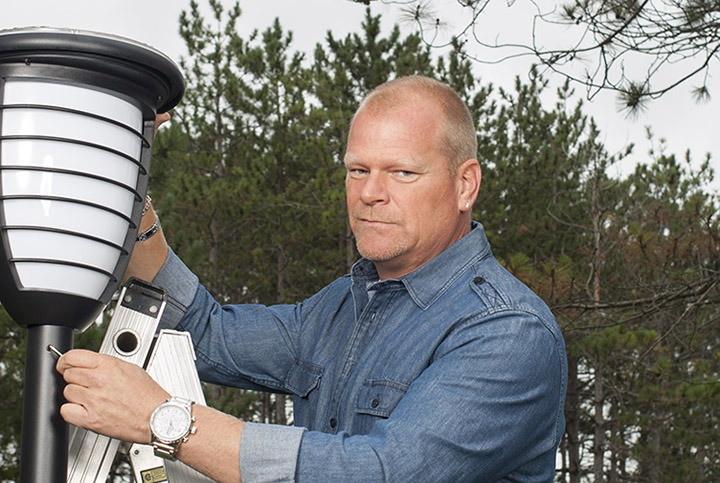
March 24 is Earth Hour and I, like many Canadians, plan to turn off the lights from 8:30pm to 9:30pm to support a greener planet. Earth Hour started in Australia in 2007 as a World Wildlife Fund initiative. Toronto jumped on board in 2008 along with 400 other cities in 35 countries, turning Earth Hour into a global movement. By 2016, almost every country in the world took part. But does that one hour really make a difference? Yes, it does. With more than 70% of the world’s CO2 emissions coming from cities, turning off the lights for one hour is a huge statement and the growth of Earth Hour shows that we’re willing to make the changes necessary to support a sustainable future.
As a contractor, going green and building a sustainable future is a huge part of my focus and should be for any responsible builder. We have an obligation to advise homeowners on what’s best for their homes, and that includes recommendations on sustainability, cost savings and solutions that are environmentally friendly.

Lighting
In terms of lighting, LEDs are the way to go. They save on energy, and no other light lasts as long. On average, LEDs last about 25,000 hours. That’s 22 years! And with advancements in LED lighting over the past few years, the options range from dimmable LEDs to LEDs for chandeliers, to strips that you can install underneath your kitchen cabinetry. Yes, LEDs are more expensive, so if a complete changeover is not in your budget, focus on slowly making the switch. Start with the lights you use most often. Making that simple changeover will give you the biggest payoff on saving energy and supporting the environment.
Insulation and Air Leaks
Inadequate insulation and air leaks in your home will result in your furnace and air conditioner working overtime. This causes huge energy loss and an increase in your bills.
Do you notice icicles hanging from your roof? Are there areas on your roof where the snow has melted? This is a sure sign that heat is escaping through your attic, causing the snow to melt. As the water drains down the roof to the roofline, it refreezes, causing icicles on the overhang. Remember, your attic is a cold zone; it should be the same temperature as the outside. You want to seal between the conditioned living space and the attic; you don’t want to seal between the attic and the outside. Airflow in the attic is important.
The roof vents and soffits should always be clear of insulation to allow for proper ventilation and seal off any air leaks with caulking. The same goes for windows and doors – check for air leaks to prevent heat from escaping in the winter, and cool air escaping in the summer. Properly sealing the building envelope will go a long way towards saving energy and controlling costs.
A simple thermal imaging inspection done by a professional can detect temperature variations in walls, ceilings, and around windows and doors. It will give you a clear idea of where energy may be escaping from your home.

Thermostats
Why have your heating or air conditioning running all day when you’re not home? Or when you’re on vacation? Programmable thermostats allow you to set the time for when your furnace or air conditioner should kick on. And thanks to advancements in technology, we now have smart thermostats that allow you to set the temperature remotely and show you energy consumption in real time. This will help to control your energy usage, especially during peak hours, and will save on energy costs.
Appliances
Energy Star-rated appliances will help to make your home more energy efficient by reducing energy use without compromising on performance. Energy Star-rated washers use half the water and energy per load of older models. Using an Energy Star-rated dishwasher, filled to the max, will use about 30 litres of water while washing your dishes by hand twice a day will use about 70 litres. It’s all about making smart choices. Look for the “Energy Star” label when shopping around, or you may consider upgrading to a state-of-the-art smart appliance. Smart appliances can be connected to your smartphone or tablet where you can control them and set preferences.

Go Low-Flow
Installing low-flow aerators on kitchen and bathroom faucets is an inexpensive and simple way to save water and money. Faucet aerators reduce water consumption by as much as 50 per cent, and you’re also saving on the cost of heating the water. Consider installing a low-flow showerhead too. Standard showerheads have flow rates around 20 litres per minute. That means that an average five-minute shower uses more than 100 litres of water. Think of how many family members in your home take a shower every day. Now that’s a lot of water! The low-flow showerhead can save half of that water without compromising on shower quality.
Low-flow toilets (or low-flush toilets) use significantly less water than full-flush toilets. Thirty per cent of the water consumption in your home is from toilet use. And the older the toilet, the greater the consumption. More recent models use six litres of water per flush, and with ultra-low-flow toilets, as little as three litres of water is used per flush.
And Then There’s the Big Stuff
Things like using geothermal energy – using the earth’s natural temperature to help heat and cool our homes, powering our homes with solar energy, or using rainwater to water our lawns. These are all ways of moving to a future of sustainability and supporting the environment.
For Earth Hour, if you’re going to do it, do it right. Be safe about it. Make sure you have flashlights with you before it’s time to turn the lights out. Never leave candles unattended, or better yet, use battery operated candles. If we work together, we can make changes that will have a huge positive impact on the world our children and grandchildren will live in.
Images courtesy of The Holmes Group and Karoleena Homes
HGTV your inbox.
By clicking "SIGN UP” you agree to receive emails from HGTV and accept Corus' Terms of Use and Corus' Privacy Policy.



